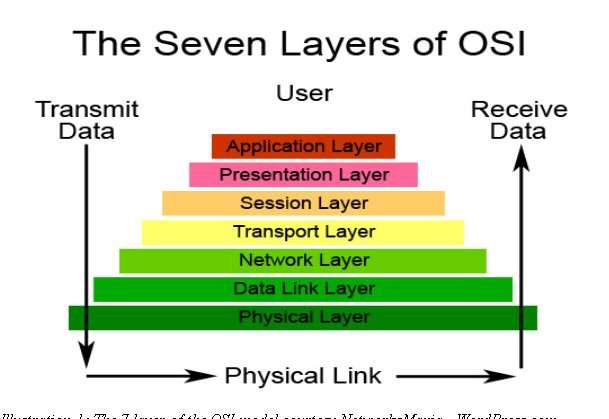IETF (Internet Engineering Task Force): Protocol Engineering
The IETF (Internet Engineering Task Force): The protocol engineering and development arm of the Internet
I chose this working group because I had not been aware of its existence and wanted to learn more about it. I am very familiar with the IEEE (Institute of Electrical and Electronics Engineers) from various research projects over the years that I have been required to complete for other Strayer class assignments. “(Rouse, M 2017) IETF (Internet Engineering Task Force) Retrieved from: http://searchsoa.techtarget.com/definition/IETF” writes:
The IETF (Internet Engineering Task Force) is the body that defines standard Internet operating protocols such as TCP/IP. The IETF is supervised by the Internet Society Internet Architecture Board (IAB). IETF members are drawn from the Internet Society’s individual and organization membership. Standards are expressed in the form of Requests for Comments (RFCs).
Simply put, as it is written: “(Alvestrand, H. 2004) Network Working Group Request for Comments: 3935 Retrieved from: https://www.ietf.org/rfc/rfc3935.txt:
The goal of the IETF is to make the Internet work better. The mission of the IETF is to produce high quality, relevant technical and engineering documents that influence the way people design, use, and manage the Internet in such a way as to make the Internet work better. These documents include protocol standards, best current practices, and informational documents of various kinds.
The Need of the IEEE 802 Standard for Networking
The IEEE 802 Standards for Networking are needed to ensure compatibility for network devices and it also simplifies networking product development. The standard makes the comparing of competing vendor products easy to understand and spurs product development. I believe that it establishes protocols that can be globally adopted and these can be applied across many markets that encourage international trade, key especially today in the global landscape business wise. Standards make it easier for new products to be developed and the markets for these products verifiable.

The IEEE 802 Standards for Networking addresses the Data Link and Physical layers of the OSI (Open System Interconnection) networking reference model.
Standards Organizations Overview
|
Organization |
IEEE |
ISO |
ANSI |
|
Purpose |
The IEEE Standards Association defines such wireless technologies as Bluetooth (IEEE 802.15.1) and WiFi (802.11) |
International Organization for Standardization |
American National Standards Institute (ANSI) |
|
Other Information |
802.11 – Standards for wireless LANs 802.1- Standards and recommended practices for: 802 LAN/MAN architecture, internetworking among 802 LANs, MANs, and other wide area networks, 802 overall network management, and protocol layers above the MAC and LLC layers. |
One important area of standardization deals with the Open Systems Interconnection (OSI) communications architecture and the standards at each layer of the OSI networking reference model. |
a private, non-profit organization. that administers and coordinates the U.S. voluntary standards and conformity assessment system. |
|
Data communications and networking. |
ANSI coordinates the U.S. voluntary consensus standards system, providing a neutral forum for the development of policies on standards issues and serves as a watchdog for standards development and conformity assessment programs and processes. |
||
|
Important for communication technology? |
Yes and I would surmise most important for communication technology since the standards created by the IEEE 802 are also adopted by the other two organizations listed in this table |
Yes |
Yes |
The Need for a Federal Regulating Body of Standards (Such as NIST)
The National Institute of Standards and Technology was created in 1901 and it is now part of the U.S. Department of Commerce. The agency was created by Congress to ensure that the U.S. Industrial infrastructure was competitive with those of the United Kingdom, Germany, and other countries. The creation of NIST and other Federal standardization bodies are beneficial in several ways. I believe that they provide product safety, ensure competitiveness, provide consumer protection, and also can act as a means of compliance. In my opinion these standards also are of benefit to the U.S. marketplace and the ability of consumers to switch to other competing products if they are dissatisfied with their initial choice. Federal Standards act as guidelines that all businesses can and should follow and with Federal Standards in place, there can also be mechanisms established that punish those that try to operate not in the best interest of the U.S. or its citizens. Federal Regulating Body of Standards can provide the following benefits:
- Product Safety and reliability
- Business benefits: provide a solid foundation to develop new technologies
- Encourage innovation
- Provides Consumer choice, new features and options
References
Alvestrand, H. (2004) Network Working Group Request for Comments: 3935 Retrieved from: https://www.ietf.org/rfc/rfc3935.txt
Rouse, M (2016) IEEE (Institute of Electrical and Electronics Engineers) Retrieved from: http://whatis.techtarget.com/definition/IEEE-Institute-of-Electrical-and-Electronics- Engineers
Rouse, M (2017) IETF (Internet Engineering Task Force) Retrieved from: http://searchsoa.techtarget.com/definition/IETF
Stallings, W (2009) Standards Organizations Retrieved from: http://www.box.net/shared/9dtnzvwys8/1/15730219/164146343/1